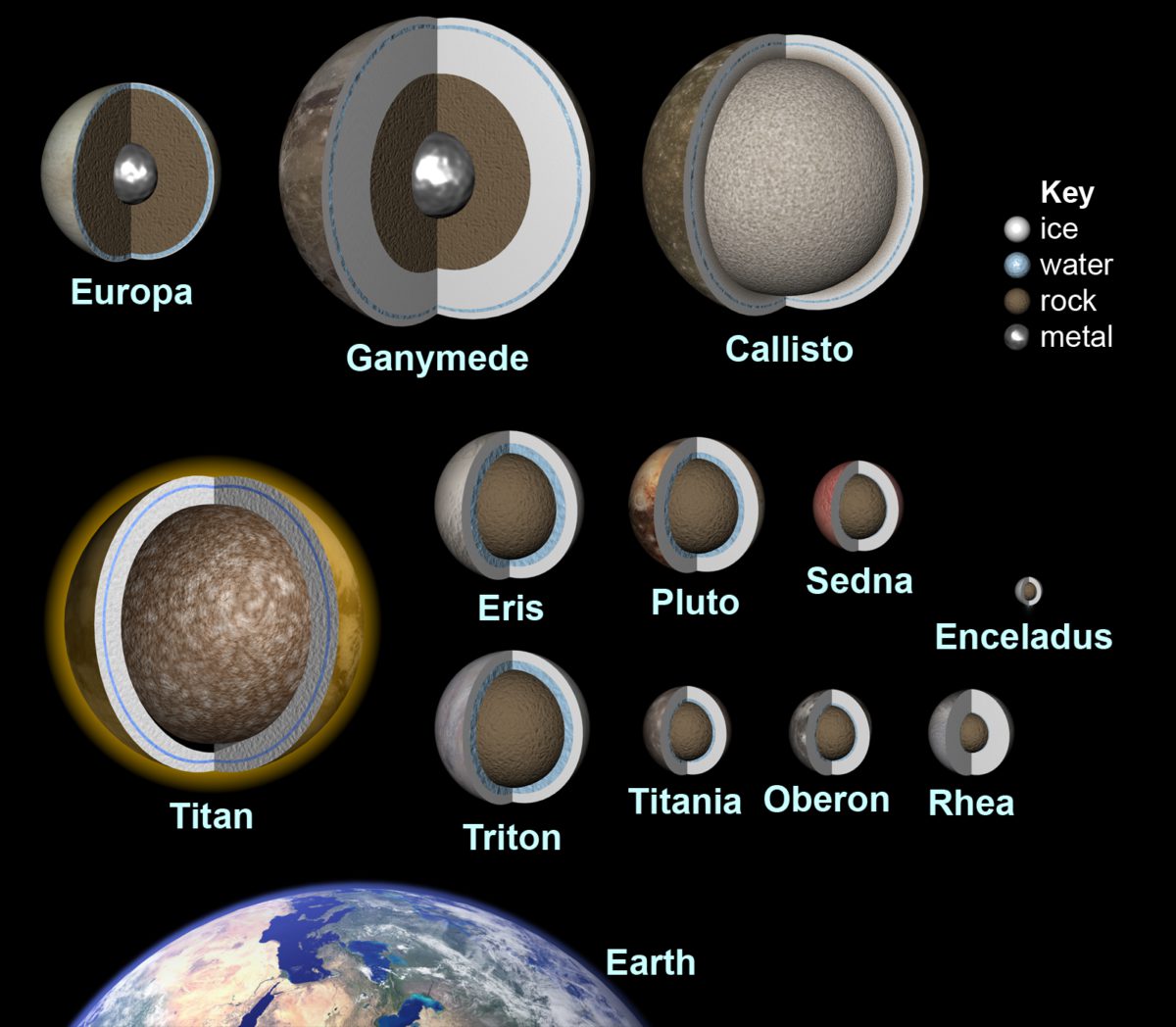Emily Lakdawalla • Mar 12, 2015
An internal ocean on Ganymede: Hooray for consistency with previous results!
NASA held a press briefing today to discuss a newly published paper that confirms a subsurface ocean at Ganymede. The idea that Ganymede has a global layer of liquid water is not a new one. Margaret Kivelson and coworkers described evidence for it from Galileo magnetometer data in 2002. Geophysically speaking, it's not hard to make an internal ocean at Ganymede, either. Ganymede is a very large world -- it's the biggest moon in the solar system, larger even than Mercury, and it gets a boost to its internal heat production from tidal forces from Jupiter and the other moons. Still, it's very cool to have an independent way of confirming that Ganymede does have an internal ocean, and that's what was published today, in an article by Joachim Saur and 13 coauthors. They used the Hubble Space Telescope's ability to see in the ultraviolet to watch how Ganymede's aurorae shift as Jupiter's tilted magnetic field rotates with each Jupiter day. It's wonderful that we can use an Earth-based telescope to look at the aurorae of a giant planet moon to deduce the presence of an ocean that we can't see.
Other writers have explained the work in more detail (try Deborah Netburn at the L.A. Times, or Jonathan Amos at the BBC, or just go to the source and read the writeup at the Space Telescope Science Institute website), so I won't go into that here. What I am interested in is: what does Saur's paper have to say about the internal structure of Ganymede? I've looked into it, and I have good news: this latest result is entirely consistent with past work on the internal structure of Ganymede. In fact, I don't even have to change this chart that Doug Ellison and I made back in 2010 comparing Ganymede to other ice-rich worlds of the solar system that could also contain oceans. (That being said, I should have updated it in 2011 to reduce Eris' size to match Pluto's -- I promise to do that after the New Horizons flyby when we know exactly how big Pluto is.)

The Hubble results don't precisely pin down the size and depth of an ocean at Ganymede, but the range of possible ocean thicknesses and depths is small. The observed behavior of the aurorae at Ganymede are consistent with a liquid ocean that is a relatively small fraction of Ganymede's radius. Of course, Ganymede is a very big world, so "relatively small" in this case can mean an ocean up to about 100 kilometers deep. According to the paper, some possible oceans that are consistent with the results include, but are not limited to:
- A liquid layer from 150 to 250 kilometers depth with relatively low salinity
- A liquid layer from 190 to 210 kilometers depth with relatively high salinity
- A liquid layer below 330 kilometers depth with relatively high salinity
Water in one form or another at Ganymede goes from the surface to a depth of about 720 kilometers, at which point you reach Ganymede's rocky outer core. So I think we can generalize these all to say: there is an ocean of less than 100 kilometers thickness located within a few hundred kilometers of the surface of Ganymede. In all possible cases, the liquid layer would be perched within the solid icy mantle, with solid ice above it of the form we have on Earth, and ice below it in a high-pressure crystalline form. (For a lot more on the funky layered forms that liquid and solid water could take at Ganymede, read my writeup of Steve Vance's work on Ganymede's internal layering, which he presented at the Lunar and Planetary Science conference two years ago.)
That is a lot of liquid water, but it's in a very different place within Ganymede than the liquid water that we think exists at Europa and Enceladus. Europa has a much higher proportion of rock to ice than Ganymede does, and is also warmer because of greater tidal friction; the same physics that predicted Ganymede's perched-ocean-within-an-icy-mantle predicts that Europa's liquid water ocean is in direct contact with its warm rocky core. Warm liquid water percolating among warm rocks is, by definition, hydrothermal activity. Hydrothermal zones are places that exobiologists imagine life might happen, because you have lots of energy and you have rich chemistry created in all that warm liquid water eating away at rocks. Earlier this week, one of the Cassini instrument teams announced that they had detected rock particles from just such an environment that originated within Enceladus.
This ocean at Ganymede is not the same. It is contained entirely within an icy mantle. And it is very, very, very far from warm rocks; Ganymede's rock is at least 400 kilometers deeper than its ocean.
But if you don't insist that everything have to do with life to be cool, then this is a very cool result. It's reassuring to know that relatively straightforward physics -- differential equations describing how heat flows through a layered planet -- can fairly accurately predict the structure of a planetary interior. Look back at that chart at the top of this page and think about how many oceans there may be, all over the solar system. Maybe there's one at Pluto. Now wouldn't that be cool?

Support our core enterprises
Your support powers our mission to explore worlds, find life, and defend Earth. You make all the difference when you make a gift. Give today!
Donate

 Explore Worlds
Explore Worlds Find Life
Find Life Defend Earth
Defend Earth

